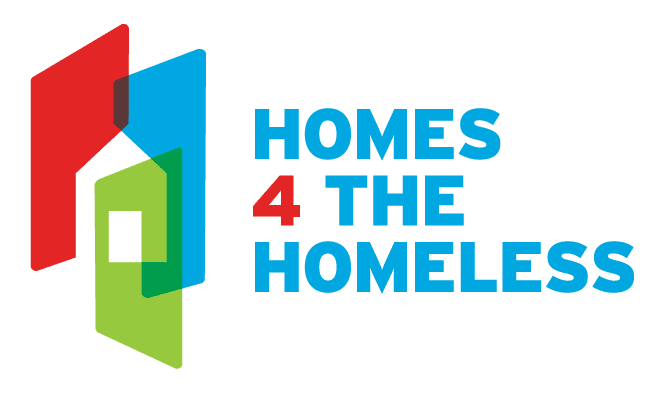A New ‘Civility Ordinance’ Makes Swaths of Houston Permanently Off Limits to Homeless People—Pushing Poverty Out of Sight, Not Out of Existence
Houston’s dystopian-sounding “civility ordinance” has been extended so that several areas of downtown are now off limits to homeless people 24 hours a day, 7 days a week. The ordinance now bans sitting, lying, or placing possessions on the sidewalk in 12 areas across downtown Houston and East Downtown at any time, day or night—effectively pushing unhoused people out of downtown Houston entirely.
It’s a cruel but unsurprising move from the city administration headed by Mayor John Whitmire, who said in a press conference, “Our goal is to get the homeless off the streets of Houston.”
That’s a very specifically worded goal. Not get people housed, not make it so that there are no more homeless Houstonians anywhere, not even to simply get people off the streets, but to specifically push anyone homeless out of the city.
Expansion to Follow
Mayor Whitmire’s administration has alluded to this expansion of the civility ordinance as a kind of pilot program for changes that they hope to make across the entire city eventually.
If successful, the entirety of Houston would be permanently off limits to visibly homeless people. And as we’ve seen more and more since the Grants Pass decision, cities and states all over the country have been quick to adopt similar policies of criminalizing and excluding homeless people from so-called public places.
Truly, the moment legal protections were lifted, blue and red cities alike rushed to show their true colors.
Civility Ordinances and the Resurgence of Ugly Laws
From all the actions and even the remarks politicians have given on the topic, there seems to be little attempt to hide the fact that the primary motivation behind these laws is to push homeless people out of sight. It’s far from the first time such laws have been enacted in America.
For more than 100 years, it was common in cities across the United States to have “unsightly beggar laws,” retroactively known as ugly laws, that prevented visibly disabled and poor people from so much as being seen in public—except, of course, if other people could profit off of these people by displaying them in a “demonstration” better known as a freakshow.
If such a person were found showing their face in public, they would be fined for each violation or potentially incarcerated.
Sounds familiar.
The ugly laws particularly targeted disabled people, namely “any person, who is diseased, maimed, mutilated or deformed in any way, so as to be an unsightly or disgusting object.” But they also applied to “unsightly beggars” in much the same way we’re seeing laws turned on homeless people today.
The talking points in support of these laws were the same as those we’re still hearing trotted out now. Complaints about sidewalk obstructions, harm to local businesses, and scaring the children were enough to see whole sectors of society completely cut off from public life.
There was then, as there is now, a vague sense of uneasiness that poverty was somehow contagious, and simply seeing it around you made you more vulnerable to it. In reality, that sense of discomfort may stem more from the sudden unconscious realization that you are vulnerable to poverty, and our society has little to no safety net ensuring everyone a decent quality of life, no matter their circumstances.
Although these laws eventually fell out of favor and came off the books in most places by the 1970s, the underlying sentiments remained. Now, we’re seeing how those sentiments have grown (and been stoked) over time, and we seem to be entering a renewed period of ugly laws reigning.
The current focus of the ire is on visibly homeless people. However, the lens will inevitably expand to include more and more “undesirable” groups as these things always do if left unchecked.
History is Repeating
All signs are pointing to the pendulum swinging to the extreme end that allowed the creation of these ugly laws back in the 1860s. People are once again willing to give up a large slice of their own freedoms for the sake of controlling others, not realizing that they themselves could become the “other” at the drop of a hat.
Whether it takes a medical emergency, a bad month at work, or simply a shift in the prevailing political discourse, what we allow for any group is what we, in turn, make ourselves vulnerable to. Only by refusing to allow treatment of anyone to sink below a certain level, no matter what, can we keep ourselves and our loved ones safe.
The self-serving thing to do is to nip all forms of dehumanization in the bud—it just so happens to benefit everyone else as well.
Where Will These People Go?
As homeless people are being rapidly pushed off of Houston’s streets, politicians insist that they are being offered shelter. However, there are reasons that people choose to live on the streets rather than in a shelter—either due to their personal circumstances or because shelter beds are simply not available to them.
Houston has hoped to raise $70 million to support this street-clearing initiative and is still falling significantly short of that goal. The population of homeless people living in the downtown areas currently under the 24/7 ban is estimated to be between 200 and 250. If the ban extends to the whole city as the mayor wishes, that number would rise considerably.
The resources are not there to house that number of people. Housing department director, Mike Nichols, said as much, stating:
“It’s disappointing to some folks who would like to do it citywide. We can’t do that. The resources aren’t there for that.”
And all of this is happening as nearly 17,000 people were purged from the city’s housing voucher waiting list.
Something has got to give in Houston, and as it stands, it will be the unhoused population that has to pay the price.
